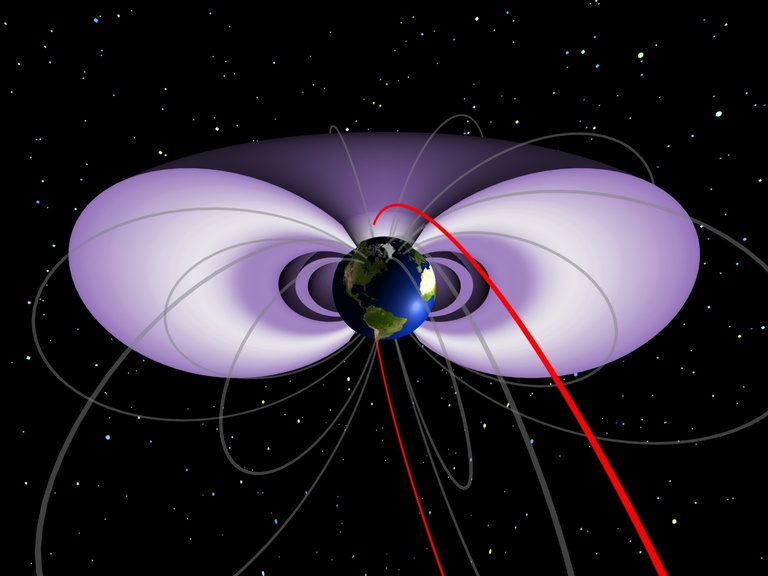“What’s in a name?” asked Shakespeare.
Quite a bit, according to NASA.
On Nov. 9, NASA renamed a recently launched mission to study Earth's Van Allen radiation belts as the Van Allen Probes mission in honor of the late James A. Van Allen, U.S. space pioneer and longtime distinguished professor of physics in the University of Iowa College of Liberal Arts and Sciences.

Van Allen discovered the radiation belts, two concentric, doughnut-shaped bands of intense radiation encircling the Earth, in 1958 with instruments he and his UI colleagues designed and built. The instruments were carried aboard Explorer 1, the first successful U.S. satellite.
Renaming the mission makes good scientific and historic sense, says Craig Kletzing, the UI’s F. Wendell Miller professor of physics and astronomy and principal investigator for one of the five instrument suites on NASA’s Van Allen Probes mission.
“Professor Van Allen discovered the radiation belts at the beginning of the Space Age over 50 years ago. Today, there remains much to learn about how they work, how the sun delivers energy to the environment about the Earth, and how the interaction between the sun and the Earth creates these two bands of very energetic particles called the Van Allen radiation belts,” he says.
Solar storms and coronal mass ejections sometimes cause the belts to swell dramatically. When this occurs, the radiation belts can threaten communications, GPS satellites and human spaceflight activities.
Launched Aug. 30 from Cape Canaveral, the Van Allen Probes mission (formerly called Radiation Belt Storm Probes) consists of two satellites having slightly different orbits so that over time, one will travel ahead of the other. Orbiting the Earth from about 300 miles above the ground to as far as 25,000 at apogee, the satellites fly nearly identical orbits during their two-year mission.
The UI-designed-and-built EMFISIS (Electric and Magnetic Field Instrument Suite with Integrated Science) investigation is a $30 million NASA-funded project to study how various amounts of space radiation form and change during space storms.
Van Allen’s long and illustrious career found him serving as professor and chair of the UI Department of Physics and Astronomy from 1951 until his retirement from teaching in 1985. From 1985 until his death in 2006, he continued to conduct research, publish papers in professional journals, and counsel students.
His research highlights included his 1973 first-ever survey of the radiation belts of Jupiter using the Pioneer 10 spacecraft and the 1979 discovery and survey of Saturn’s radiation belts using data from the Pioneer 11 spacecraft. In all, he was principal investigator for scientific investigations on 24 Earth satellites and planetary missions.
His many awards included a NASA lifetime achievement award, membership in the National Academy of Sciences, the National Medal of Science, and the Crafoord Prize—for space exploration, the equivalent of the Nobel Prize—from the Royal Swedish Academy of Sciences.
The Van Allen Probes comprise the second mission in NASA's Living With a Star program to explore aspects of the connected sun-Earth system that directly affect life and society. The program is managed by NASA's Goddard Space Flight Center in Greenbelt, Md.
For more information about NASA's Van Allen Probes mission, visit: www.nasa.gov/vanallenprobes.